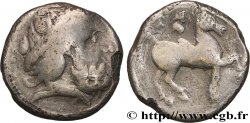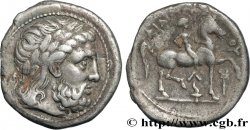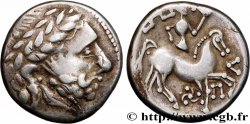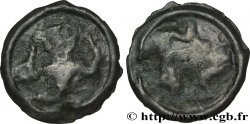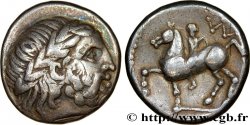bgr_494440 - DANUBIAN CELTS - TETRADRACHMS IMITATIONS OF PHILIP II AND HIS SUCCESSORS Tétradrachme “au W”
无库存.
所有在网站上销售的产品 (2022)
价格 : 550.00 €
所有在网站上销售的产品 (2022)
价格 : 550.00 €
种类 Tétradrachme “au W”
日期: c. IIe-Ier siècles AC.
铸币厂名称/城市 Atelier indéterminé
材质 silver
直径 23,50 mm
模子方针 7 h.
重量 13,13 g.
稀少度 R3
关于品相的说明
Exemplaire sur un flan ovale bien centré des deux côtés. Très belle tête de Zeus au droite. Revers stylisé mais encore de bonne facture. Très jolie patine de collection ancienne avec des reflets dorés
出版目录中的项代码 :
家谱
Cet exemplaire provient de la collection du docteur Thierry de Craeker et de MONNAIES 59, N° 43
正面
正面的文字 ANÉPIGRAPHE.
正面的说明书 Tête barbue et laurée de Zeus à droite.
背面
背面的文字 W.
背面的说明书 Cavalier au pas à gauche.
评论
Nous pourrions avoir affaire à un prototype du type au cavalier au W. Au droit , la tête de Philippe est encore de bon style. Seule la couronne de laurier proéminente permet de savoir que nous sommes en présence d’une imitation au droit. Pour le revers, il est plus difficile de distinguer un prototype. Nous avons l’impression que le graveur a simplement transposé le type classique à gauche. Seule la lettre du revers (W ou VV) permet d’identifier le type.
We could be dealing with a prototype of the type with the rider in the W. On the obverse, the head of Philip is still in good style. Only the prominent laurel wreath lets us know that we are in the presence of an imitation on the obverse. For the reverse, it is more difficult to distinguish a prototype. We have the impression that the engraver simply transposed the classic type to the left. Only the letter on the reverse (W or VV) allows us to identify the type
We could be dealing with a prototype of the type with the rider in the W. On the obverse, the head of Philip is still in good style. Only the prominent laurel wreath lets us know that we are in the presence of an imitation on the obverse. For the reverse, it is more difficult to distinguish a prototype. We have the impression that the engraver simply transposed the classic type to the left. Only the letter on the reverse (W or VV) allows us to identify the type








 对产品描述纠错
对产品描述纠错 打印
打印 分享我的选择
分享我的选择 提问
提问 Consign / sell
Consign / sell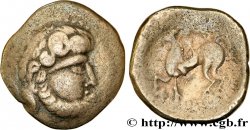
 产品介绍
产品介绍